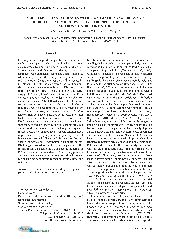摘要
For long-term orthopaedic implants, the creation of a surface that is repulsive to bacteria while adhesive to tissue cells represents a promising strategy to control infection. To obtain such multifunctional surfaces, two possible approaches were explored to incorporate a model antibiotic, rifampicin (Rf), into the osteogenic polycaprolactone (PCL)/chitosan (CHS) biomimetic nanofibre meshes by (1) blending Rf into the electrospinning solutions and then electrospinning into nanofibres (i.e., Rf-incorporating fibres), or (2) depositing Rf-containing poly(D,L-lactic-co-glycolic) acid (PLGA) micro-patterns onto the PCL/chitosan nanofibre meshes via ink-jet printing (i.e., Rf-eluting micro-pattern/fibre). Rapid release of Rf from both meshes was measured even though a relatively slower release rate was obtained from the Rf-eluting micro-pattern ones. Antibacterial assay with Staphylococcus epidermidis showed that both mesh surfaces could effectively kill bacteria and prevent biofilm formation. However, only Rf-eluting micro-pattern meshes favoured the attachment, spreading and metabolic activity of preosteoblasts in the cell culture study. Furthermore, the Rf-eluting micro-pattern meshes could better support the osteogenic differentiation of preosteoblasts by up-regulating the gene expression of bone markers (type I collagen and alkaline phosphatase). Clearly, compared to Rf-incorporating nanofibre meshes, Rf-eluting micro-patterns could effectively prevent biofilm formation without sacrificing the osteogenic properties of PCL/chitosan nanofibre surfaces. This finding provides an innovative avenue to design multifunctional surfaces for enhancing bone tissue formation while controlling infection.
- 出版日期2012-12
